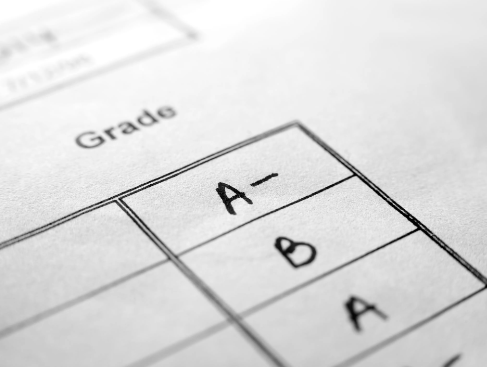Why do we go to school? Is school solely for learning – as teachers would have us think – or is it to socialize and be influenced by our peers?
Well, according to our school systems, academics are the main reason that schools exist and their primary goal is student success. Of course, socializing and peer influence happens, but for schools this is just part of the equation; plus it helps students deal with the stress that comes with school.
Everyone knows that one of the major stressors for students is grades, which has been the case forever. Montgomery County Public Schools (MCPS), however, has a grading policy that moderately tries to support students more than punish them for their work.
Some of the positives to the grading policy include how final grades for the semester are calculated, the fifty percent rule for assignments, the maximum value of an assignment, and encouraging retakes.
MCPS’ semester grade calculations make it logical for students to pass classes, graduate, and even have higher grades. For example, the policy rewards students for having a higher grade one quarter of a semester and allows a “D” to be an acceptable passing grade.
But is this policy efficient and beneficial for students? The short answer is yes for various reasons. First, as an MCPS student and a current sophomore at Paint Branch, I see the grading policy as efficient. It creates an opportunity for students who are struggling in a certain class, whether it be an Honors or AP course, to feel less stress because they know that how they do one quarter won’t necessarily wreck their grade.
But of course, retakes are not the most effective usage in the grading policy. It can falsely make students believe that they don’t have to put in their maximum effort in doing their work, especially their Essays and important tests. Essentially, classes that allow “retake” or “makeup” assignments lead kids to believe they don’t have to do well on the original assignment.
One positive about the practice/prep assignment is that more focus is on completion and teachers CAN give zeroes, which makes kids want to do them more, even though it is only 10% of grade.
For the school year, as usual, it mostly revolves around how students’ grades are calculated and their overall academic performance. For example, students receiving an A for one quarter and a B for quarter two still get an A. This is positive because it rewards students for doing better in one quarter than another. In other words, it doesn’t punish students for one bad grade per quarter out of two.
Of course, the grading is not perfect as there are some negatives to these good parts of the grading policy. These include the negative side of the fifty percent rule and the overuse of retakes and makeup assignments. The downside to the 50% rule is that it gives students at least 50% for an assignment as long as they produce a good-faith effort. This is very inefficient because it gives kids credit for assignments that sometimes they did not even do.
Overall, a policy implemented in our school district has been moderately beneficial for teachers and mostly students over their course in high school.










































